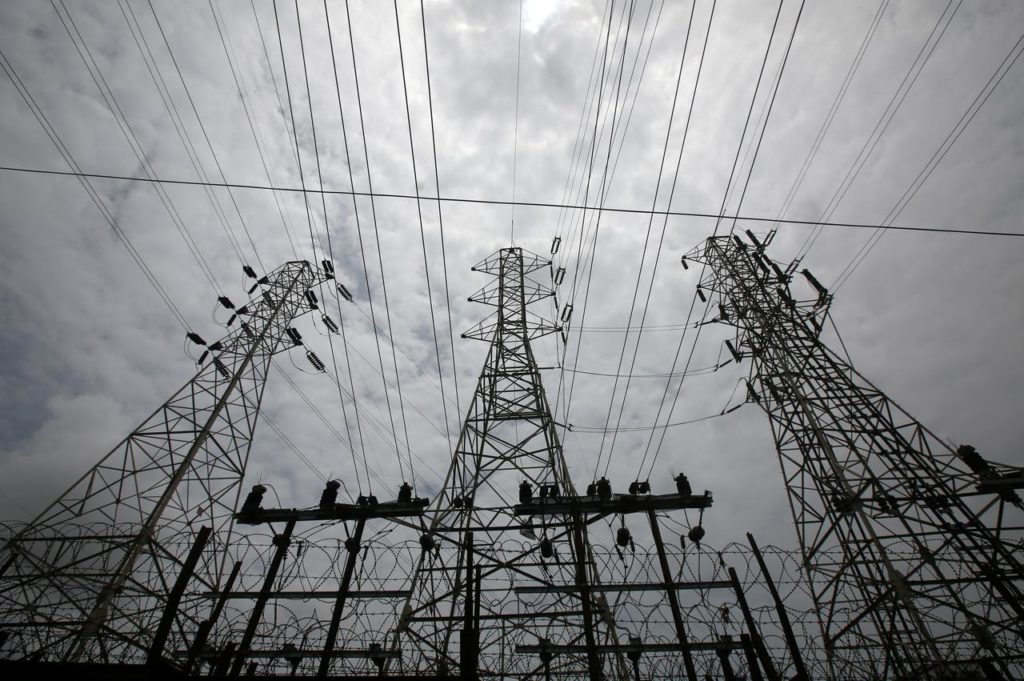India Risks Widespread Blackouts This Summer
Apr 18, 2022 | Pratirodh Bureau
FILE PHOTO: High-tension power lines are pictured outside a Tata Power sub station in the suburbs of Mumbai
India faces a persistent shortage of electricity over the next four months as rapid demand growth from air conditioners and refrigeration loads overwhelms the available generation on the network.
India’s grid reported a record load of 200,570 megawatts (MW) on July 7, 2021, at the height of last summer, according to the National Load Despatch Centre of the Power System Operation Corporation (POSOCO).
Since the middle of March, the grid has routinely reported maximum loads above 195,000 MW, including a peak of 199,584 MW on April 8 – less than 0.5% below the record.
During the evening peak, when there is no solar generation available and supplies are even more stretched, loads have hit record levels in recent weeks.
Exceptionally high loads have arrived far earlier this year, well before the most intense period of summer heat, implying the grid is in trouble.
In a symptom of the struggle to meet demand, the grid’s frequency has faltered since mid-March, dropping persistently below target, with longer and more severe excursions below the safe operating range.
Chronic under-frequency is a sign the grid cannot meet the full demand from customers and makes planned load-shedding or unplanned blackouts much more likely.
India has a frequency target of 50.00 cycles per second (Hertz), with grid controllers tasked with keeping it steady between 49.90 Hz and 50.05 Hz to maintain the network in a safe and reliable condition.
Grid controls begin to disconnect some loads automatically if the frequency slows to 49.2 Hz with further load shedding at 49.0 Hz, 48.8 Hz and 48.6 Hz (”Review of the Indian electricity grid code”, 2020).
In addition, relays in the grid’s northern and western regions are armed to disconnect load automatically if frequency falls too quickly and drops below 49.9 Hz, while relays in the south are armed to start load shedding at 49.5 Hz.
But frequency has been below target so often for so long in recent weeks it has sometimes appeared the system has been forced to operate according to a much lower informal target owing to inadequate generation.
Since the middle of March, frequency has averaged just 49.95 Hz and has been below the lower operating threshold of 49.90 Hz more than 23% of the time.
On April 7, average frequency fell as low as 49.84 Hz and was below the lower threshold for 63% of the day, according to data from POSOCO.
LOW COAL STOCKS
Power producers’ coal inventories remain very low, limiting their ability to run coal-fired units at full capacity to meet demand.
Grid-connected generators hold coal stocks equivalent to less than 9 days worth of consumption compared with 12 days at the end of April 2021 and 18 days in 2019.
Inventories have not really recovered since falling to a critical low of just 4 days at the end of September 2021, when fuel shortages resulted in widespread power cuts.
Rapid growth in electricity demand ensured fuel consumption stayed strong during the traditional winter stock building period while high coal prices also discouraged restocking.
India’s rail ministry announced on April 12 that coal from domestic mines and import terminals will be prioritised on the rail network through the end of June to try to increase stocks.
But the very low level of coal stocks at power plants at the start of the maximum annual demand period indicates power shortages are more or less inevitable over the next few months.
AIR CONDITIONERS
In contrast to widespread blackouts experienced in October last year, the current problem is the result of strong demand as well as supply problems.
India’s grid is under increasing pressure from the rapid growth in load from commercial and residential air conditioners, refrigeration and other loads, boosting electricity consumption at all levels of coal stocking.
Temperatures in northern India have been unusually high for the time of year since mid-March, resulting in a rapid rise in electricity demand.
Peak daily loads in the seven days centred on April 8 were more than 9% higher than the same period a year earlier.
In an effort to curb rising electricity demand, the government’s Bureau of Energy Efficiency has mandated a default setting of 24°C for air conditioners sold in India since 2020.
Users can override the default but the government is relying on inertia to establish 24°C as a standard comfort temperature.
Average daily temperatures rose above 24°C in New Delhi as early as March 13 and power demand has surged since then.
The early arrival of hot weather means there have been 182 cooling degree days so far this year, compared with a long-term seasonal average of 99.
But temperatures are likely to continue rising to a peak at the end of June or beginning of July, pushing electricity demand even higher over the next 2-4 months.
Given the grid is already struggling, it is unlikely to be able to serve higher loads between May and August, making load shedding and other power cuts more or less inevitable during any period of unusually hot weather. (Reuters)
